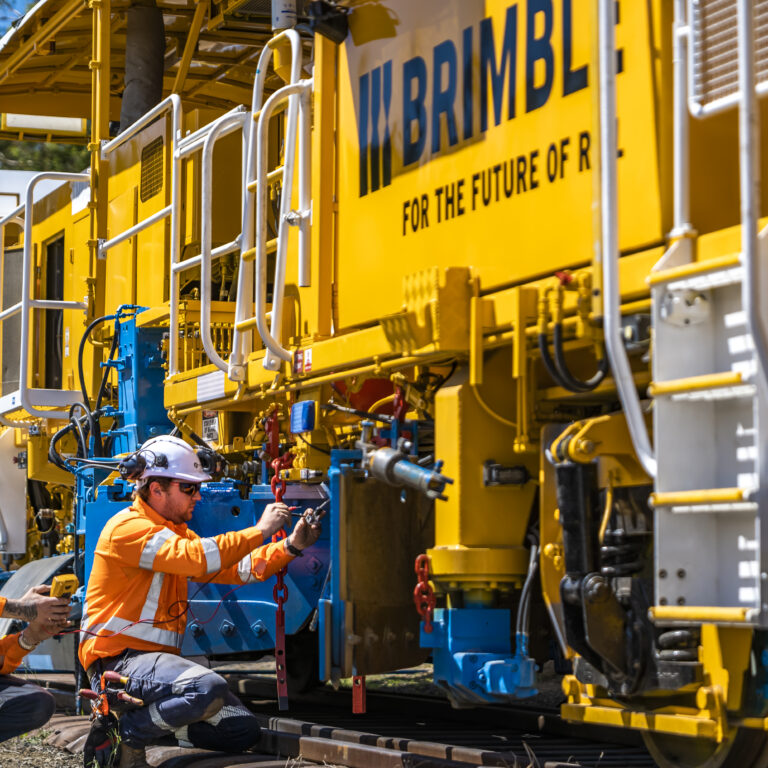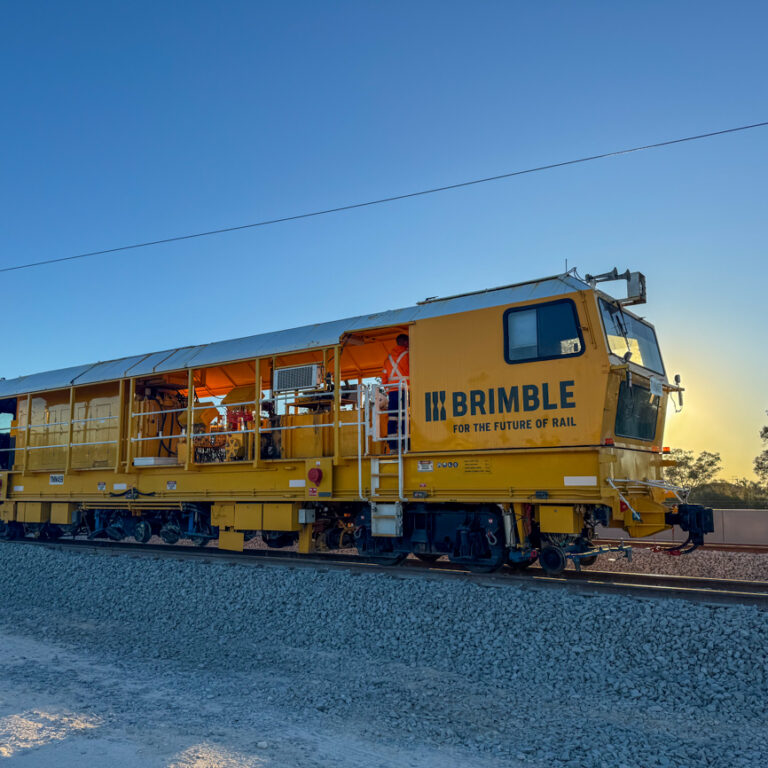
Brimble: Bringing better resurfacing technology nationwide.
Brimble is bringing digitalisation to the fore as it upgrades and expands its fleet to meet the needs of the Australian rail industry.

Brimble is bringing digitalisation to the fore as it upgrades and expands its fleet to meet the needs of the Australian rail industry.
Seven years ago, the Brimble siblings pooled their money to buy their very first rail resurfacing machine that would get the company off the ground in the Hunter Valley region of New South Wales.
Today, the organisation is unrecognisable from those early days and has expanded to cover the whole of Australia.
While the small beginnings were critical to the company’s success – they attribute their growth to strong values, relationships and a people-first focus – Brimble has grown to the largest fleet of rail maintenance equipment in the industry across every gauge.
Brimble has more than 65 machines including tampers, regulators, stabilisers, ballast cleaners, MFS wagons and recording vehicles. The company is also in the process of upgrading and refurbishing 40 more machines to add to the fleet over the coming years.
Machines for any project
Brimble organises its fleet into three core offerings for the rail sector: the Ultimate Series, the Pro Series, and the Utility Series.
Managing Director, David Brimble, tells Rail Express about how a machine’s series designation is often defined by the level of capability of the machine.
“The more custom the machine, the more it can perform to our exact specifications,” Brimble said. “Our Ultimate Series sets a new standard in rail resurfacing capabilities, offering exceptional power, versatility, and speed.
“Our customisations mean these machines are truly the best in the market when it comes to their ability to resurface tracks swiftly and effectively.”
He said the Ultimate Series is well-suited to various settings, including metro, heavy haul, light country rail networks, or complex junctions.
“The Pro Series represents unbeatable value with outstanding performance. From production and turnout tampers to all-rounder tampers, regulators, and stabilisers, these powerful and versatile machines meet a wide range of railway maintenance needs,” he said.
“Our Utility Series represents an economical solution, coupled with quality results.
“Designed for restricted access and strategic usage, these highly capable machines excel in both turnouts and straight tracks. The Utility Series offers a reliable and affordable option to get the job done.”
Digitalisation
To meet the needs of projects across the country, Brimble has continued to upgrade machines across its fleet with new technology.
The cornerstone of Brimble’s digitalisation is the Human Machine Interface (HMI) system. This technology moves away from the historically complex and inconsistent technology used in track resurfacing, in many cases leaving behind antiquated control panels made up of countless dials, switches, lights, and alarms. Brimble HMI utilises user-friendly touch-screen monitors and a network of high-definition video cameras, making it simpler for operators to oversee, operate, and optimise rail resurfacing machinery.
Steven Johnson is the General Manager of Operations East at Brimble and knew this technology was setting Brimble apart when he joined the team in 2023.
“By replacing historic technology with our HMI system, we are improving efficiencies, reducing errors and keeping workers out of dangerous situations. We are also upskilling them on technologies such as remote control of the machines and using drones for visuals in hard-to-access places,” he said.
“The HMI technology we have integrated into the machines removes all the failing switch components and gives the operator a better visual over what’s going on in the machines’ brains and more options for changes on the run.”
By removing physical components, Brimble ensures it is minimising downtime as Johnson explained.
“Digitalising these components minimises issues that can slow and even halt operations,” he said.
“If we are working in remote areas of South Australia or Western Australia for example, we no longer need to wait for technicians to attend on-site. We can rectify it remotely.”
Brimble is in the process of upgrading its full fleet of machines to the HMI systems. Johnson said the organisation has upgraded the original control units.
“The HMI upgrading limits the amount of time our staff spends in dangerous situations. It also allows operators to easily adjust things in the field,” he said.
“We also have a lot more visibility to ensure the machine does not do any damage to the client’s assets when in travel and work mode.”
This technology was developed by the team working out on-site as Johnson explained.
“The HMI system was not designed by an engineer working behind a desk. It was developed by actual operators in conjunction with the broader team,” he said.
Ballast Wagons
Brimble’s ballast wagons are a great example of how their technology is improving the delivery of ballast materials for the maintenance and construction of the track asset.
The wagons are controlled remotely, which limits interactions between workers and the drop zones, keeping sites safer for the team.
The wagons are digitally linked and in constant communication. They have wireless HMI operation of the hydraulic-actuated hopper doors, allowing the ballast to be dropped in precise locations.
“We’re proud to be making things more intuitive and safer for our workers through this technology, and it’s creating better results for our clients across Australia,” Johnson said.
Brimble’s team is expanding and the organisation will be aiming to add project managers and technical operations workers across the country in 2024.



